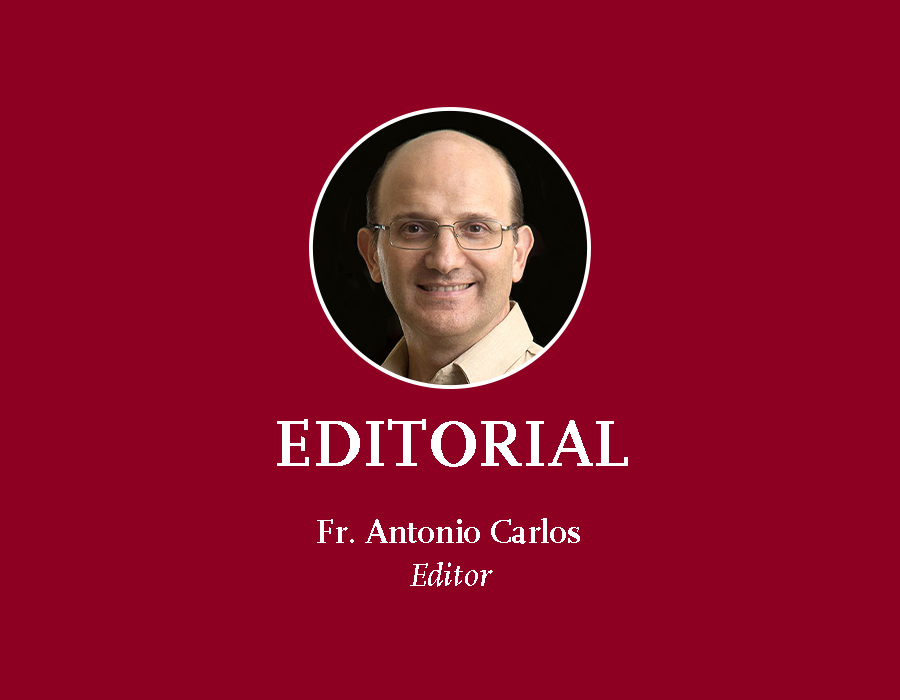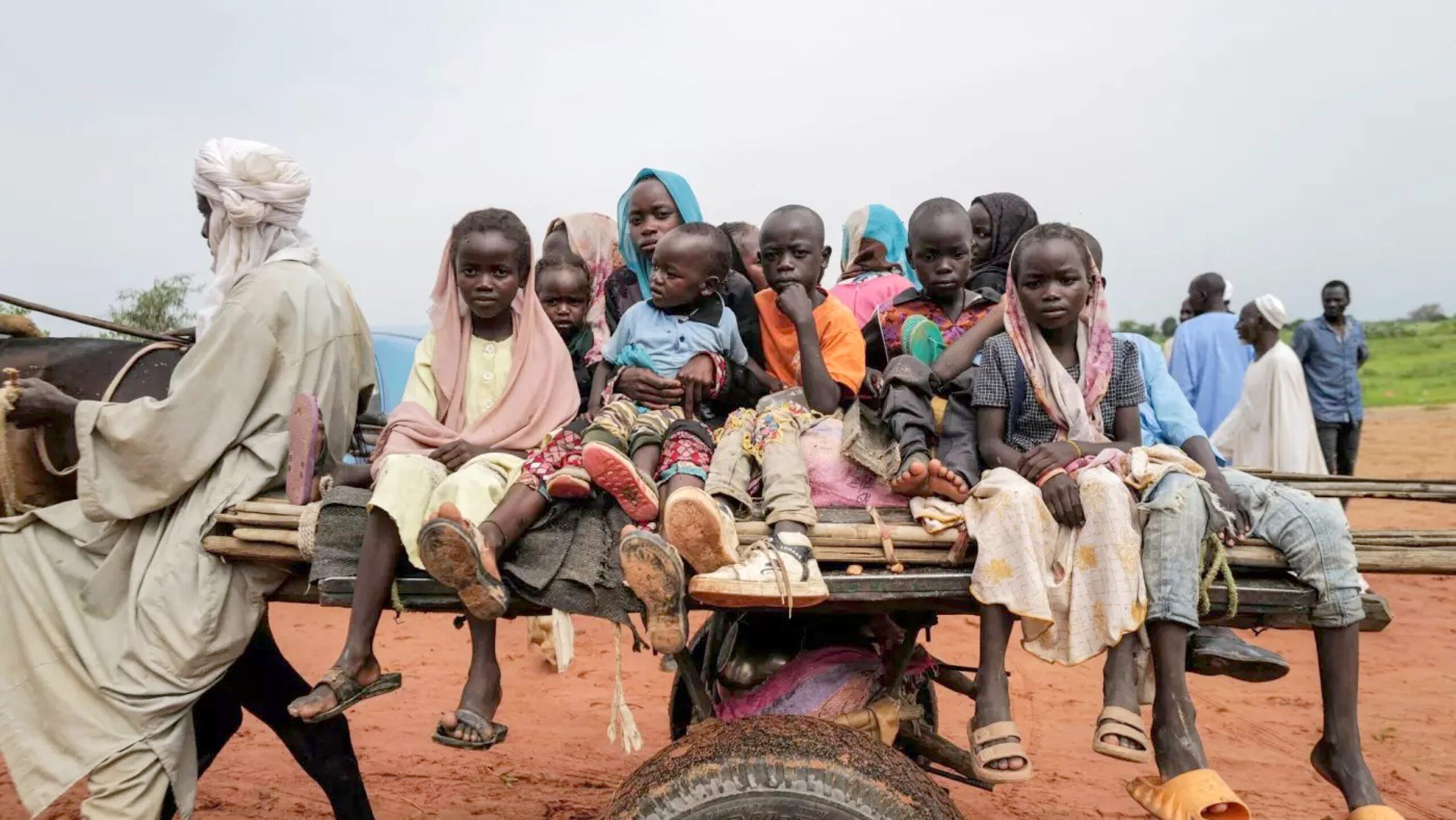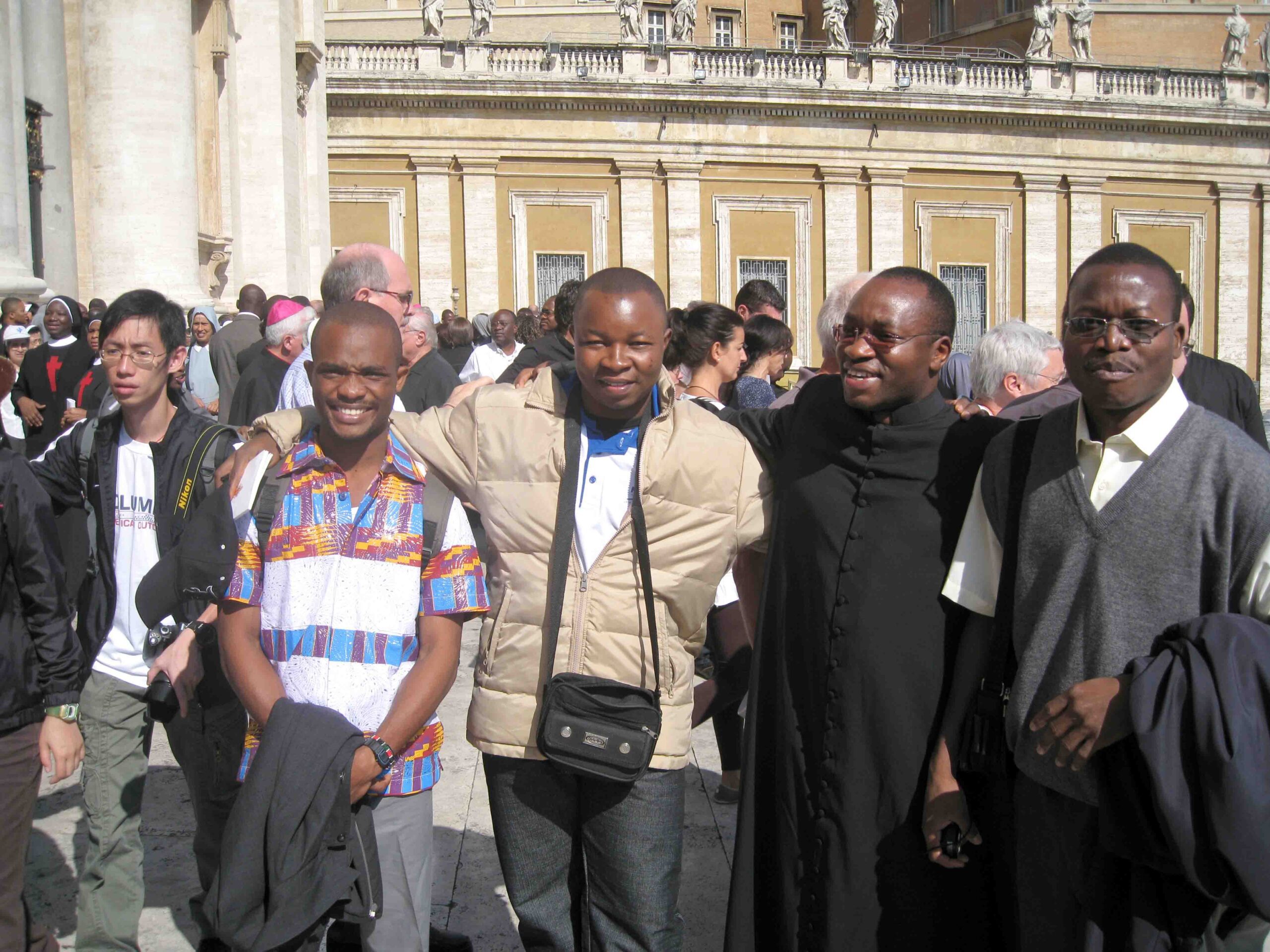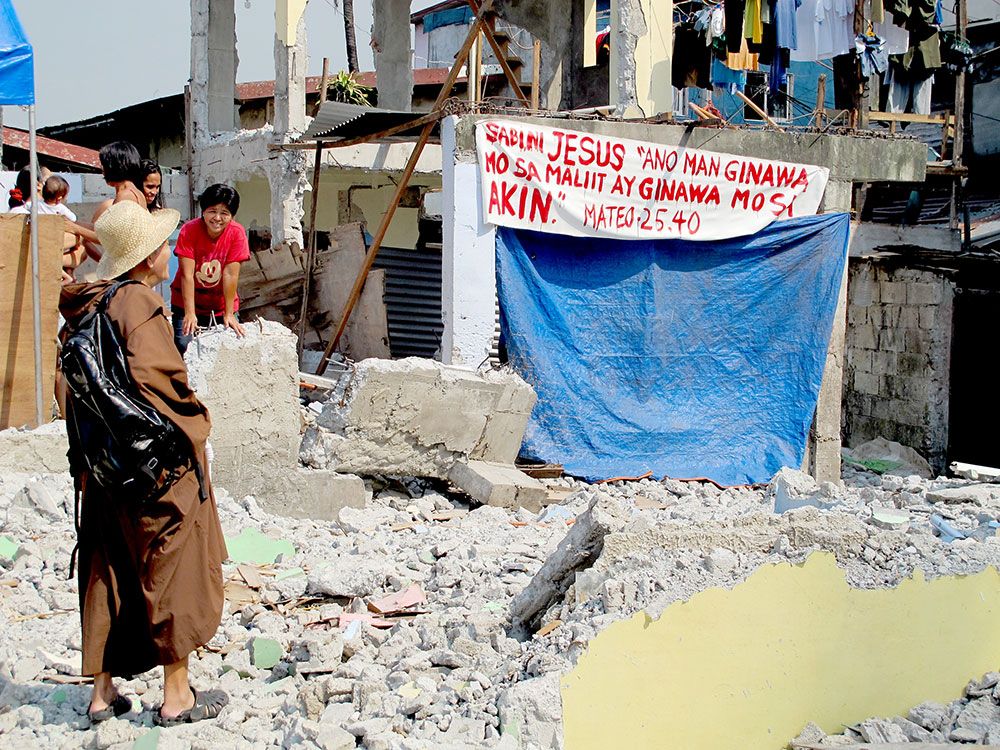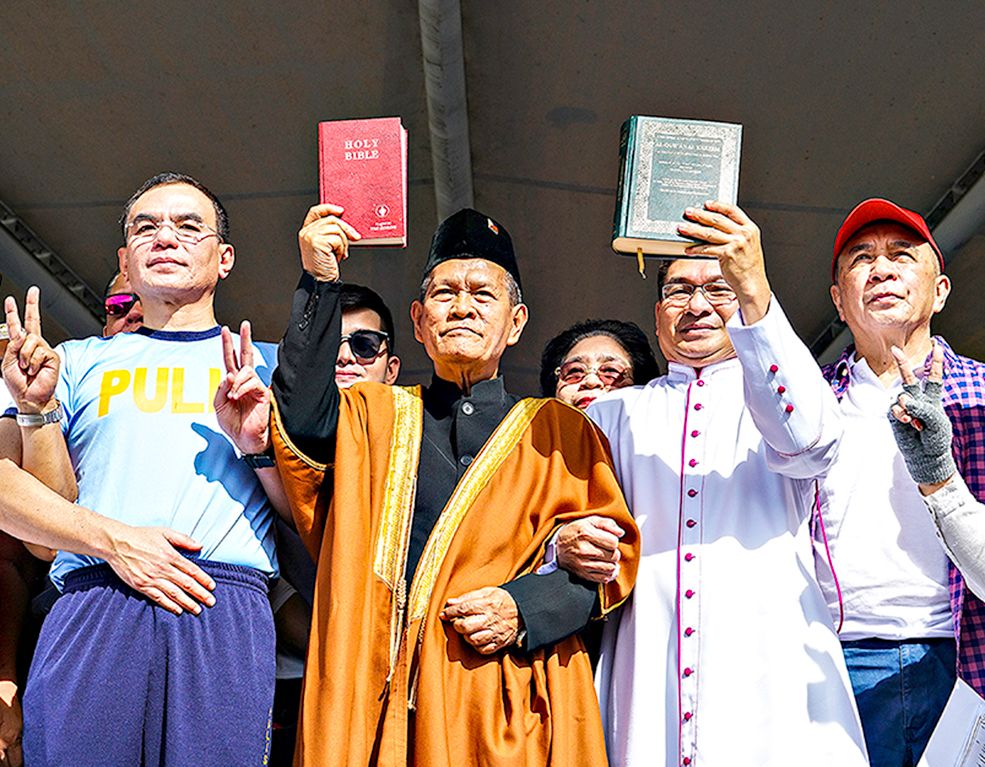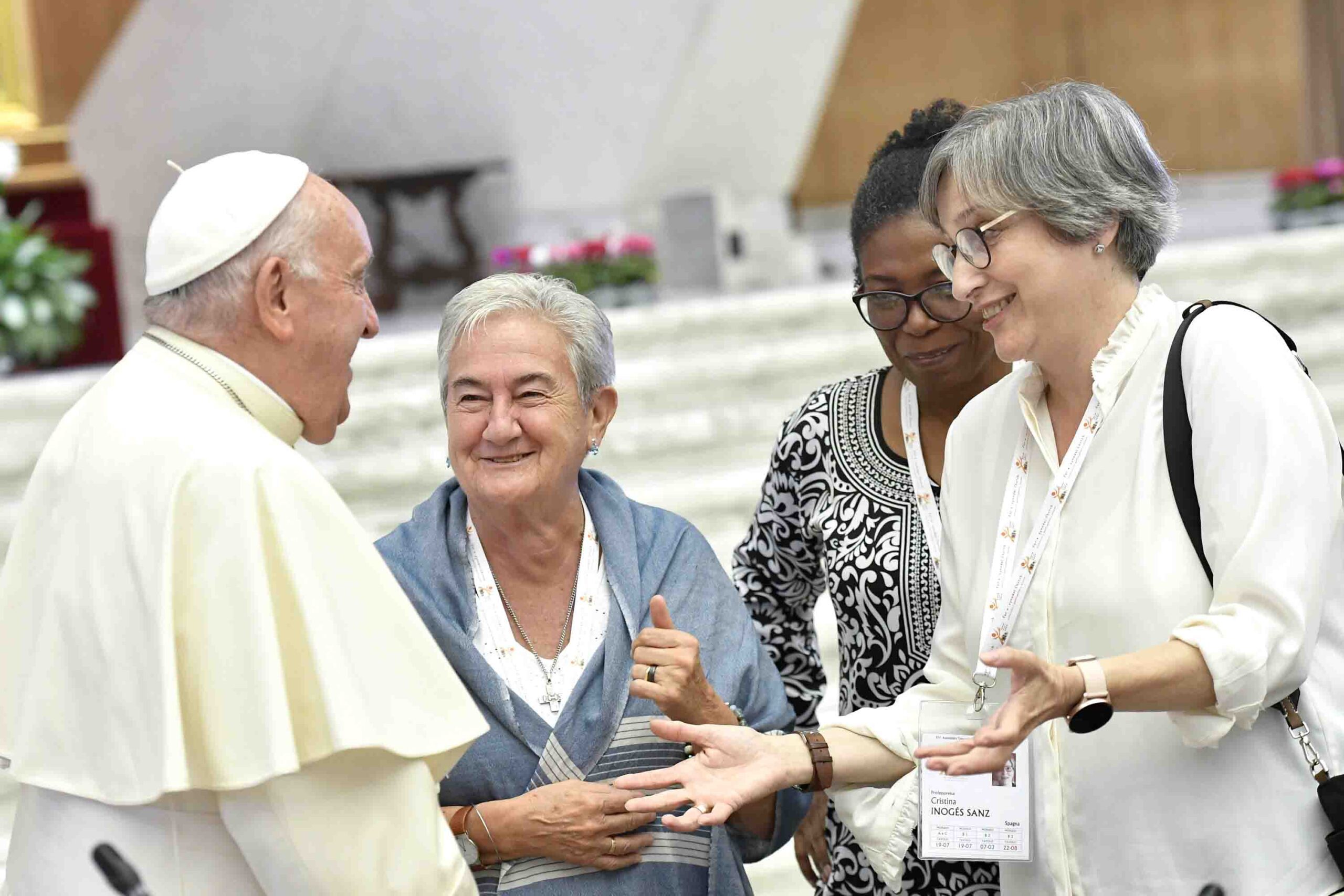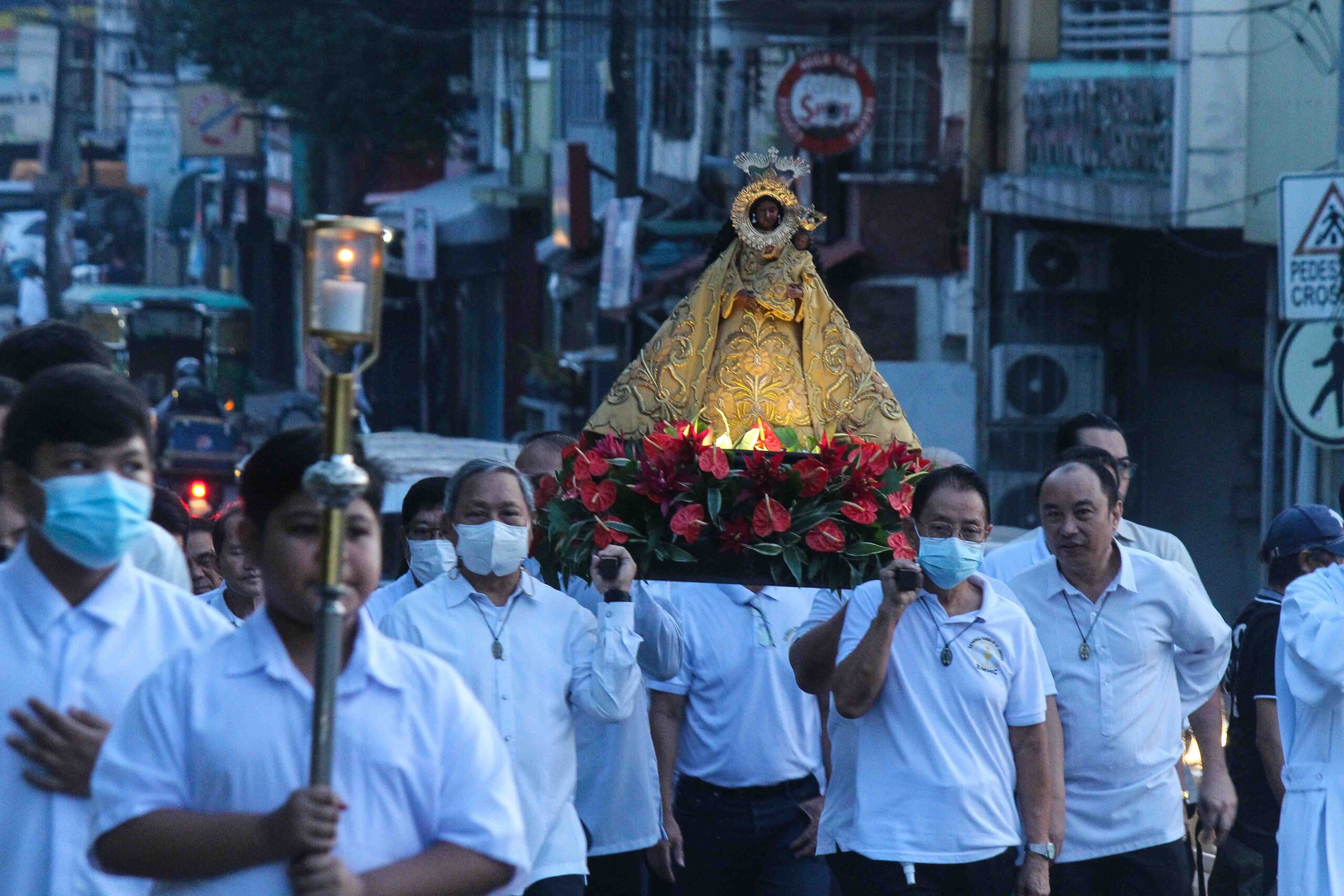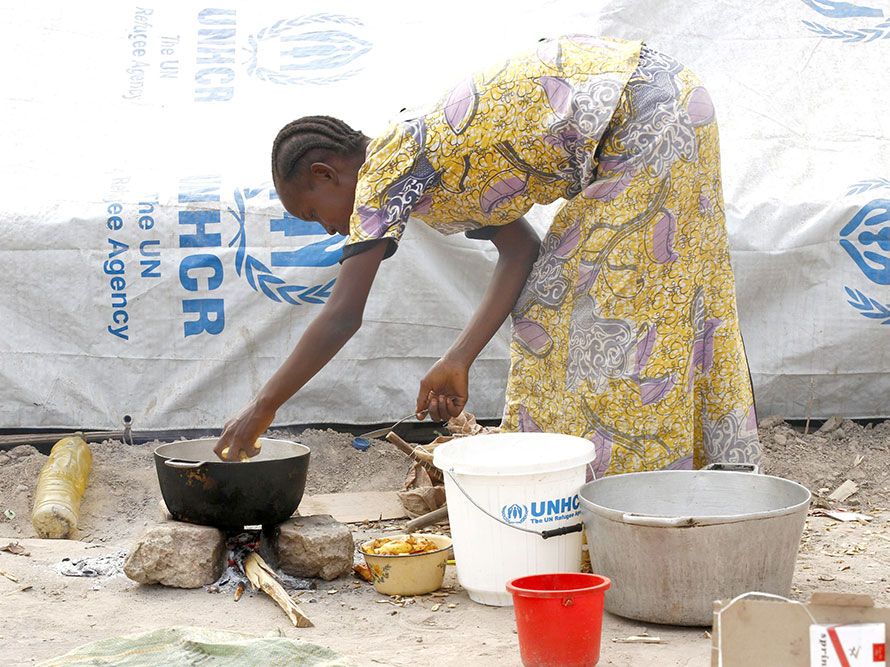When Mayor Antonio Gaston of Silay City, Negros Occidental, was gravely ill, by inspiration, he began to conceive of a plan to help his people develop and grow into having a living faith in God. In 1949, he founded the Barangay sang Virgen with friends in Silay, namely, Jose Javelona, Edgar Osden Sr., Nemesio Estrobo, Primitive Oñasa, Tomas Oro, and Felix Jadoc. Outside of Silay, Toning (as he is fondly called) shared his ideas with his old friend from the Ateneo, Henry Del Castillo.
One of the first renewal movements of the Catholic faith was born with them. It was centered on the Virgin Mary and the Rosary devotion to gather the people for prayer and religious instruction. The rallying Scriptural passage for the masses’ re-education to their faith was Matthew 6: 33: “Seek first the Kingdom of God and His righteousness and all these things shall be given you besides.” This biblical phrase was stated as the summary of the renewal: “First things first.”
The Barangay sang Virgen finds its root in educating people about Christian values and catechizing them through the prayers of the Most Holy Rosary, which coincidentally was Our Lady’s call to families to fervently pray as a source of their strength, protection, and growth in their faith, hope, and love.
While in Cadiz City (now part of the Diocese of San Carlos) in 1954, the Mayor spoke with then-Bacolod Bishop Manuel Yap about giving the patroness of the Barangay sang Virgen organization a purely Filipina look. Bishop Yap approved the idea but suggested that the image, however, should convey an impression of Jewishness.
ICON OF THE INA
Getting such an icon painted proved to be a problem. The initial efforts of artists from religious orders, as well as by graduates from prestigious art schools were not completely satisfactory. Several months later, Father Virgil Pixner, Mill Hill priest and director of the Santa Barbara Leprosarium (now Sacred Heart Sanitarium) in Iloilo, sent Gaston a black and white picture of the painting done by Crisogono Domingo (a leper inmate of the facility), not on a canvas but on a lawanit board. One look at the painting and Gaston knew the Barangay finally had an accurate picture of its patroness.
Thus, the Virgen sang Barangay icon became the primary object/focus of this devotion depicting the Blessed Virgin Mary as a mother modestly clad in the traditional garb of an Iloy, Ina or Nanay (mother) carrying the child Jesus, clasping in his left hand the Most Holy Rosary, which is appealing to devotees for they can easily relate to her as their nurturing Mother with her Son Jesus, in His stern look telling all of us to heed His Mother’s call to pray the Holy Rosary.
This is a “work of inspiration and prayer,” declared Bishop Manuel Yap, showing his enthusiastic approval of the icon. By October 16, 1954, he had canonically blessed and installed it in the Diocese of Bacolod. Thus began the Feast Day of the Icon, which also marked the commemoration of Bishop Manuel Yap’s death anniversary, which occurred on October 16, 1966.
The organization was established on May 1, 1955 by the local Philippine Catholic Church authority, Archbishop of Cebu Julio Rosales, D.D. as a lay Marian organization. As a pioneer member of the Sangguniang Layko ng Pilipinas (Lay Council of the Philippines), it has gathered and registered two million devotees in its initial years of inception.
On June 12, 1975, by request of Boholanos, as they were facing a drought, the original painting of the icon of the Virgen sang Barangay arrived in the Diocese of Tagbilaran for her visitation; she was brought by the Regional Datu of Davao, Lakan Olibo and his companions. Her visitation from parish to parish, to the remotest barrios or barangay, lasted for almost six years and 15 days. The last parish visited was Sikatuna. From Sikatuna, she was brought to Ilihan Hill Chapel in Jagna, Bohol, starting February 3, 1979 up to January 12, 1981.
OUR LADY OF THE PHILIPPPINES
On January 14, 1981, the original painting was brought back to Bacolod City for the historical visit of the Holy Father. On February 20, 1981, His Holiness, Pope John Paul II, personally blessed the icon of the Virgin, giving his motu proprio, “This is Our Lady of the Philippines,” according to witnesses’ accounts.
One of the remarkable values this organization features is that the father of each family is the one leading the Holy Rosary in the house-to-house transfer of the estandarte (banner). It fosters closely knit families as a unit structure called “trinity.” Thus, whatever church formations, programs, and liturgical activities exist are easily echoed down to the grassroots.
The members of the Barangay sang Virgen are performing a vital function of Catholic Action in their apostolic work among the masses. They are effective instruments in bringing the Church and the Faith to the people by encouraging devotion to our Lady and undertaking socioeconomic projects through community action.
This makes the Barangay sang Virgen a microcosm of the local church. That is why it is our humble claim that before even the Church coined BEC (Basic Ecclesial Community) as a way of life, the Barangay sang Virgen, as an organization, was already living out that kind of life as “being Church” in the farthest-flung areas of the Barangay by doing the “Family Block Rosary.”
Love to Our Mother Mary garnered the devotion not only of the local faithful of Negros Province, or the “little nobodies,” as its founder would endearingly call the devout families but also proliferated all over the Philippines. For that matter, wherever Ilonggos would be, there is the devotion to the Virgen sang Barangay through the Block Rosary, expanding chapters in the United States and even in Rome, Italy.
“The Barangay sang Virgen is a gift of the Holy Spirit to the Church. It is too big for us to handle, and it is not meant only for us in the Diocese of Bacolod, as we can see it is all over the Philippines and beyond,” said Bishop Patricio Buzon of the Diocese of Bacolod, in the CBCP annual retreat in July 2024, while presenting the celebrations of the 75th Diamond Jubilee founding anniversary of this organization.
VISITATIONS OF THE VIRGEN
The Barangay sang Virgen today remains unified in its dedication to honoring the image of the Virgen and spreading the motto, “To Jesus through Mary.” Different activities have developed in various provinces and abroad, expressing devotion to the Filipina Virgen.
These practices may or may not always include praying the Holy Rosary, reflecting a decentralized organization with no strong centralized system for monitoring the communities’ activities nationally or internationally. As a result, diverse and creative projects have emerged to honor the Virgin Mary as the Virgen sang Barangay.
For instance, the Parañaque Barangay sang Virgen community brought the national pilgrim icon from Bicol to join their grand Marian procession. In the pilgrimage season of Antipolo, they participated in a Rosary pilgrimage, featuring processions in traditional Filipino costumes and the recitation of the Rosary.
Marian exhibits in parishes and malls, as well as cultural activities, also occur, such as dances depicting the history or cultural practices related to praying to the Virgen sang Barangay to the tune of Barangay Balitaw. Additionally, skits during fiestas illustrate various aspects of the movement and its connection to the Family Rosary.
A significant aspect of the Barangay sang Virgen organization’s devotion includes image visitations of the Virgen sang Barangay, sometimes replacing the family rosary. This does not always involve statues; it may be as simple as volunteers bringing pictures of the Virgen to small communities to encourage praying the rosary.
The former practice of carrying a uniquely designed banner for family rosaries has declined. Activities during these image visitations vary due to the lack of a standard format, but the common thread remains the praying of the rosary. Forming “trinities” (groups of several houses based on the rosary structure) is no longer a widespread practice, with image visitations taking precedence. Consequently, the devotion to praying the family rosary has diminished, particularly among poorer communities.
Many Barangay sang Virgen communities still engage in parochial activities, such as participating in fiestas, organizing feeding programs, or holding cultural events. During times of calamities, Barangay sang Virgen members also offer assistance. In some parishes, members have integrated with the BEC, benefiting from spiritual formation activities or social services.
The “Samaria,” an adaptation of the Cursillo de Cristianidad for the masses, is not as prevalent as it was during the 1960s and 70s. One of its last active centers was in Bohol, but the pandemic temporarily halted these seminars. There are, however, plans to revive this valuable formation program as a fruit of the 75th Diamond Jubilee year celebrations to renew and strengthen the Barangay sang Virgen organizational structure and devotional activities.



